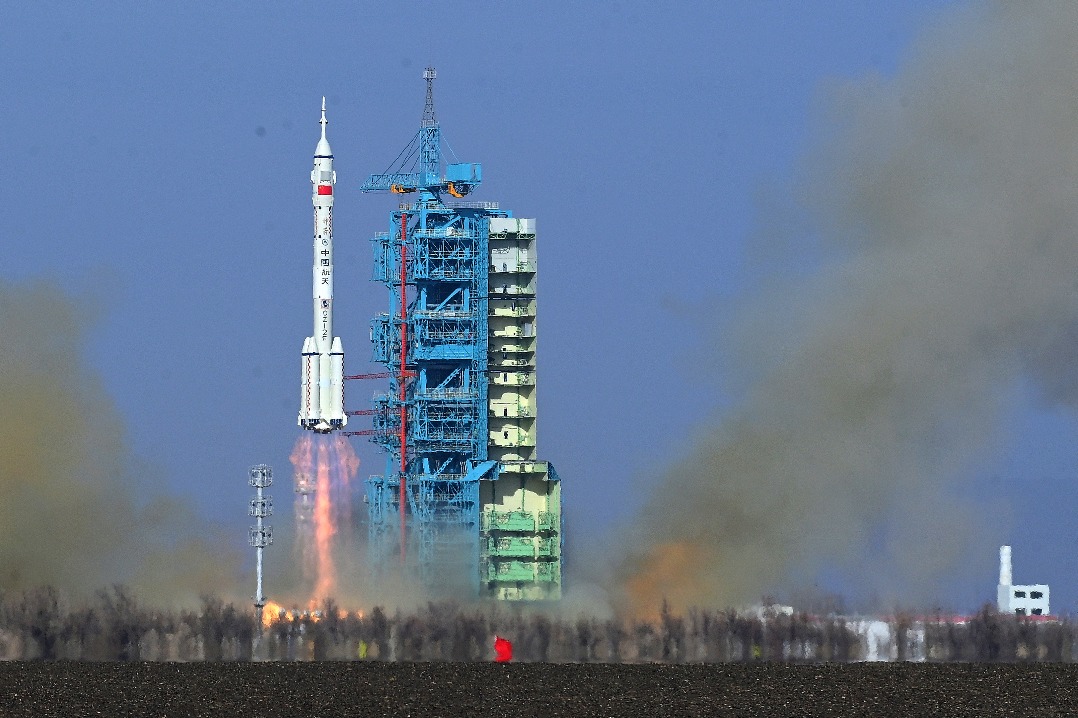Xi Focus: Xi takes China to forefront of global climate governance

BEIJING -- The northern Chinese city of Ordos, once thriving on the "black gold" of its vast coal reserves, is now emerging as an unlikely forerunner in China's green transition, betting its future not on carbon but on green technology.
At the heart of this shift lies a sprawling zero-carbon industrial park, where wind turbines and solar panels feed a smart grid that powers factories producing hydrogen equipment, photovoltaic devices and batteries for electric vehicles.
Operating on nearly 90 percent green electricity and recycling wastewater for use, the park has proven that sustainability can drive growth. Last year, its output value of new energy equipment manufacturing more than doubled to over 20 billion yuan (about $2.8 billion).
The industrial park, alongside efforts to modernize the city's coal-related industries, came under President Xi Jinping's push to have resource-dependent regions reinvent their development models. During an inspection trip to Inner Mongolia autonomous region in 2023, he urged the region to promote the transformation and upgrading of traditional energy sectors while vigorously developing green energy.
The Ordos project is not an isolated case. China is pushing for the development of around 100 national-level zero-carbon industrial parks between 2026 and 2030 while transitioning existing industrial parks toward low-carbon or zero-carbon operations.
This is part of a broader national effort championed by Xi -- to accelerate the green transition across the board.
In 2023 and 2024, the global average temperature hit record highs for two consecutive years, highlighting the escalating urgency of climate actions.
"Green transformation is not only the essential way to address climate change, but also a new engine for economic and social development," said Xi, also general secretary of the Communist Party of China (CPC) Central Committee and chairman of the Central Military Commission.
Under his leadership, China has placed climate actions high on its national governance agenda, shifting the world's second-largest economy toward green, low-carbon growth alongside global cooperation.
At the General Debate of the 75th Session of the UN General Assembly in 2020, Xi pledged that China, as the world's largest developing country, will strive to peak carbon dioxide emissions before 2030 and achieve carbon neutrality before 2060 -- a much shorter time span than many developed countries would spend.
Since then, vigorous policies have been rolled out on top of the already hefty input in green development, setting in motion what Xi described as "a broad and profound systemic socio-economic transformation."
The results are tangible. China now leads the world in adopting clean energy and producing the equipment needed for the transition to a low-carbon economy, including solar panels, wind turbines and electric vehicles. By the end of 2024, renewable energy sources accounted for 56 percent of the country's total installed power generation capacity.
The green drive has also permeated daily life, evidenced by the booming adoption of new energy vehicles (NEVs). Approximately one in every 10 vehicles on China's roads is now an NEV. In a landmark development, new NEVs outsold fossil fuel cars for the first time in October, accounting for 51.6 percent of all vehicles sold in China, the world's largest auto market.
Remarkable changes have also occurred in the industrial sector due to the commitment to green and low-carbon development. Xi stressed transforming and upgrading traditional industries with new technologies to make them higher-end, smarter and more environmentally friendly while developing new quality productive forces.
Beyond industry, the country is leading global greening efforts through massive afforestation. Xi, who has participated in tree planting activities in Beijing for 18 consecutive years, has overseen a push that has expanded forest coverage to over 25 percent of China's land area, contributing a quarter of the world's new green areas since 2000.
Meanwhile, China's national carbon emission trading market, launched in 2021, has evolved into the world's largest, serving as a critical tool to help reduce carbon footprints and meet emissions targets.
With these combined efforts, China has effectively coordinated carbon reduction with economic growth, dispelling the notion that decarbonization requires sacrificing economic vitality.
Official data showed that between 2020 and 2024, China's GDP grew at an average annual rate of 5.5 percent, even as its energy intensity, which measures energy consumption per unit of GDP, fell 11.6 percent, equivalent to a reduction of 1.1 billion tonnes of carbon dioxide emissions.
On the international stage, China continues to contribute certainty to global climate governance.
While delivering video remarks at the UN Climate Summit in September, Xi noted that "green and low-carbon transition is the trend of our time," calling for the international community to stay focused on the right direction.
At the event, Xi announced China's new Nationally Determined Contributions (NDCs), including a 7 to 10 percent reduction in economy-wide net greenhouse gas emissions from peak levels and increasing the share of non-fossil fuels in total energy consumption to over 30 percent by 2035.
"These targets represent China's best efforts based on the requirements of the Paris Agreement. Meeting these targets requires both painstaking efforts by China itself and a supportive and open international environment," Xi said.
China, for its part, has been promoting green cooperation and technology sharing. Guided by the vision of building a community with a shared future for humanity, its partnerships with other countries help make low-carbon growth both attainable and inclusive.
In the United Arab Emirates, the Al Dhafra Solar PV Plant, built in partnership with China, stands among the world's largest, powering hundreds of thousands of homes. From Argentina's Cauchari solar parks to Kazakhstan's Zhanatas wind farm, Chinese technology is helping reshape their national grids.
Speaking at the just-concluded 30th UN Climate Change Conference (COP30) in Belem, Brazil, Chinese Vice-Premier Ding Xuexiang, as Xi's special representative and also a member of the Standing Committee of the Political Bureau of the CPC Central Committee, reiterated China's firm commitment to a green, low-carbon and high-quality development path, while continuously providing high-quality, low-carbon products and services to other countries, thereby supporting the global green transition.
The journey of Ordos -- from a coal capital to a climate pioneer -- has lately found its audience on the global stage. For international attendees watching footage of the zero-carbon industrial park at the COP30 China Pavilion this month, it represented more than just the metamorphosis of a city; it was also a microcosm of a nation translating its climate commitments into concrete, tangible actions.
- Xi Focus: Xi takes China to forefront of global climate governance
- Museums showcase shared Chinese identity
- New horned toad species discovered in South China
- Hohhot's new 4F-class airport completes test flight
- China will deepen energy cooperation with Russia: vice-premier
- Cop shields public from scammers






































